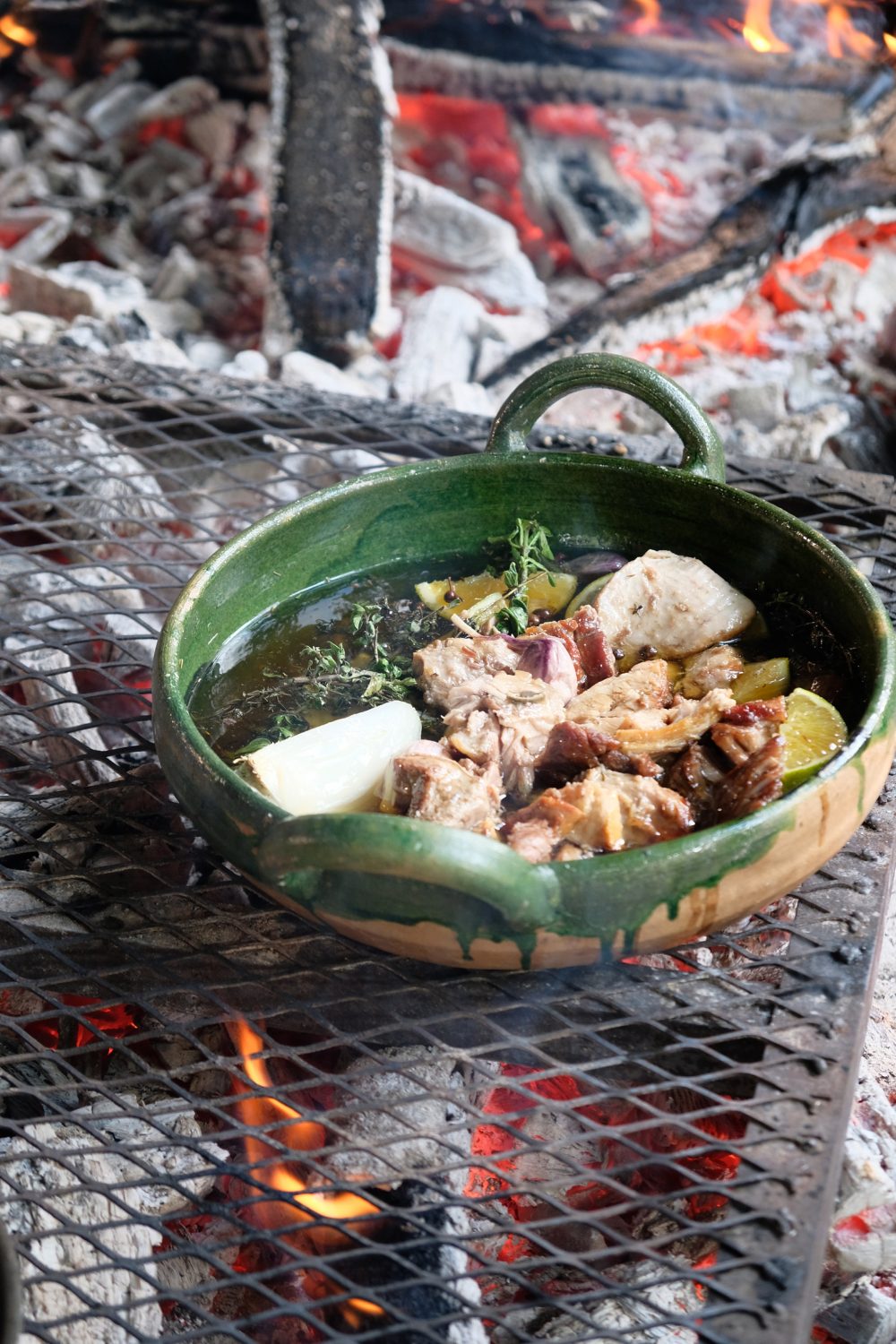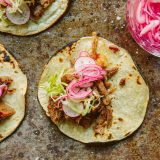I was sitting across a picnic table from Jesús Ochoa, sous chef at Criollo restaurant in Oaxaca, taking notes as fast I could, trying to parse out the secrets of carnitas. Ochoa is young, open-faced and soft-spoken, dressed in a dark Criollo shirt with a matching apron, and perfectly at ease around food and fire. It was a sunny morning, the restaurant slowly coming to life for lunch service, and we were seated in a large walled-in garden with chickens running amok and an outdoor cooking area covered with plastic tarps.
Dried leaves on the roof started to smolder and were raked off casually, as if the occasional fire is part and parcel of outdoor cooking. The cook fire was started with 3-foot lengths of dry kindling. After an hour, they had a solid base of coals, and Ochoa placed a black metal cooking grate over the top. By the garden wall, another cook was roasting peppers, garlic and onion on a large comal. She then moved on to blue corn tortillas, stacking them for service. Oaxaca has a soft, easy pace to it: wood smoke, dried leaves, chickens underfoot, soft winter light—it’s rhythmic and lulling.
Ochoa prepares carnitas much like a confit. (Most meat dishes in Oaxaca call for precooking the meat in a pressure cooker or simmering it in water.) He marinates it overnight using 35 grams of salt (about 2 tablespoons) per 5 liters of water, plus garlic, onion and other seasonings. Then the pork is cooked in oil in a glazed earthenware pot at 225°F for eight hours along with garlic, thyme, pepper, oregano, cumin and onion. The pork is served as a taco with chicharrones (pork rind cracklings), along with avocado salsa, pickled onions and cilantro. What was surprising, besides how bright and pungent it tasted, was that the pork was not crispy—it was soft like any good confit. Instead, Ochoa let the chicharrones add the crunch.

At Oaxaca's Criollo restaurant, sous chef Jesús Ochoa and other staffers are experts at cooking carnitas and other dishes over a wood fire.
Here at milk street, we needed some culinary translation to make carnitas work in a home kitchen. We kept the flavor profile (oregano, thyme, garlic and onion), but the eight-hour confit had to be rethought. We opted to braise pork butt in oil and water (1 cup each) in a moderate oven for three hours. This gave us some of the benefits of confit in less than half the time. If we had chicharrones, then crisping the pork would not be necessary, but since this was not an option, we followed common carnitas procedure by crisping chunks of pork in a nonstick skillet for a few minutes to improve the texture. (You can flip the pork over after a few minutes and do both sides if you like carnitas extra-crispy.) We also offer a quick recipe for pickled onions, as it was served in Oaxaca. And we agree that fresh cilantro and an avocado salsa are the perfect accompaniments. A few sliced radishes, as they offered in Oaxaca, also make a nice addition.
In Oaxaca, fire is still at the foundation of culinary tradition, whether to heat a comal and char vegetables and chilies, or to place a skillet directly on or over the coals. It’s a reminder that cooking in the 21st century may be easier, but it certainly isn’t any better.





